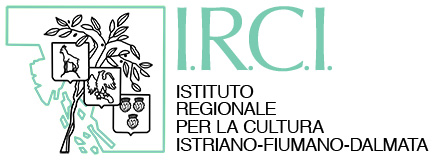INAUGURAZIONE venerdì 11 aprile alle ore 17.30 presso l'IRCI/Civico Museo della Civiltà istriana, fiumana, dalmata di via Torino, 8 a Trieste.
La mostra “Castellieri: radici di pietra” celebra l’arte e il tempo della protostoria, intrecciandoli in una narrazione unica che offre un'opportunità preziosa per esplorare le antiche civiltà che hanno abitato il Caput Adriae.
Non si tratta di una mostra archeologica tradizionale, ma di un'occasione di riflessione: un viaggio nel tempo, un invito a riscoprire e valorizzare le radici culturali del nostro territorio. Si tratta di un'esposizione duale che si sviluppa attraverso le immagini: da un lato, l'arte narra la storia e l'archeologia con intenti didattici; dall'altro, il passato prende forma nelle mani di artisti che vivono o hanno incontrato questo territorio lungo il loro cammino creativo.
La prima parte della mostra è dedicata al disegno archeologico ricostruttivo e alla fotografia del paesaggio archeologico, offrendo una narrazione basata sulle ricostruzioni storiche e sugli studi degli archeologi sui siti antichi e la vita degli abitanti di quei luoghi. La narrazione si sviluppa su aree tematiche. Si inizia con l'osservazione della geografia dei castellieri e la loro ubicazione, con foto di insediamenti situati in Istria, isole del Golfo del Quarnaro, Carso triestino e sloveno e Friuli centrale. Una sezione è dedicata alle modalità di costruzione e pianificazione delle strutture murarie, con fotografie, disegni, video e un diorama ricostruttivo del castelliere di Rupinpiccolo. Successivamente si esplora un'area limitata, che rappresenta idealmente una capanna, per approfondire la vita all'interno del castelliere, la costruzione delle abitazioni e le attività produttive. Dopo un breve accenno agli archeologi che nel corso dell'ultimo secolo hanno lavorato per ricostruire la storia di questi luoghi, il percorso didattico si conclude con una sezione riguardante le necropoli coeve.
La seconda parte dell'esposizione, sviluppata in un’altra sala, esplora le modalità con cui l'arte contemporanea ha affrontato il tema dei castellieri in un percorso del tutto soggettivo. Ogni opera diventa uno strumento di scoperta e riflessione per gli artisti che, attraverso una varietà di tecniche e materiali che spaziano dal carboncino alla pittura ad olio, dal tessuto alla pietra, sanno cogliere e reinterpretare le tracce lasciate dalle civiltà passate. Le opere non si limitano a raccontare visioni personali della storia e dell'archeologia, ma le vivono, le rappresentano ed evocano nuove prospettive, invitando il pubblico a riflettere su tematiche universali. Sono ospiti artisti, fotografi, videomaker e autori locali o che hanno vissuto in questo territorio per un periodo della loro vita.
INAUGURATION on Friday 11 April at 5.30 pm at the IRCI/Civic Museum of Istrian, Rijeka, Dalmatian Civilization in via Torino, 8 in Trieste.
The exhibition “Hillforts: Stone Roots” celebrates art and the time of prehistory, weaving them in a unique narrative that offers a valuable opportunity to explore the ancient civilizations that once inhabited the Caput Adriae. This is not an ordinary archaeological exhibition, but an opportunity for reflection: a journey through time and an invitation to rediscover and enhance the cultural roots of our territory. The exhibition is dual in nature, unfolding through images: on one side, art narrates the story and archaeology with educational intent; on the other, the past takes shape in the hands of artists who either live in or have encountered this land during their creative journey. The first part of the exhibition is dedicated to reconstructive archaeological drawing and photography of the archaeological landscape, offering a narrative based on historical reconstructions and archaeologists’ studies of ancient sites and the lives of the inhabitants of those places. The exhibition itinerary is developed in thematic areas. It begins with an observation of the geography of the hillforts and their location, with photographs of settlements in Istria, the islands of the Gulf of Kvarner, the Trieste and Slovenian Karst and central Friuli. A section is devoted to the construction and planning of wall structures, with photographs, drawings, videos and a reconstructive diorama of the Rupinpiccolo hillfort. Next, a limited area, ideally representing a hut, could be explored in order to examine life inside the hillfort, the construction of dwellings and production activities. After a brief mention of the archaeologists who have worked over the last century to reconstruct the history of these sites, the educational tour concludes with a section on the coeval necropolises.
The second part of the exhibition, developed in another room, explores the ways in which contemporary art has addressed the theme of hillforts in an entirely subjective journey. Each work becomes a tool for discovery and reflection for artists who, through a variety of techniques and materials ranging from charcoal to oil painting, from fabric to stone, are able to capture and reinterpret the traces left by past civilizations. The works do not merely recount personal visions of history and archaeology, but live them, represent them and evoke new perspectives, inviting the public to reflect on universal themes. The exhibition features artists, photographers, video makers, and authors, both local and those who have lived in this territory for a period of their lives.


